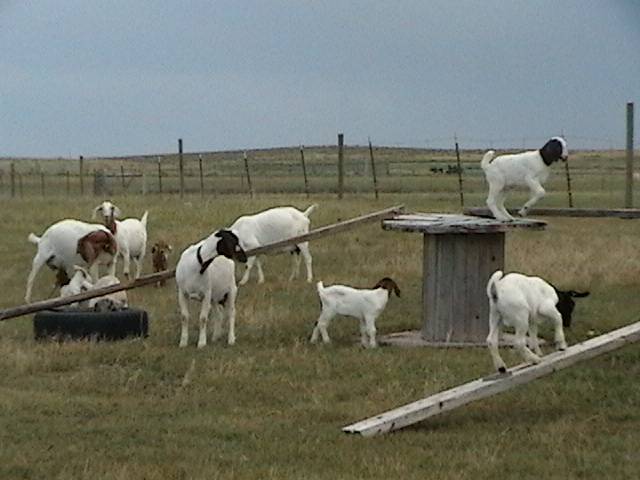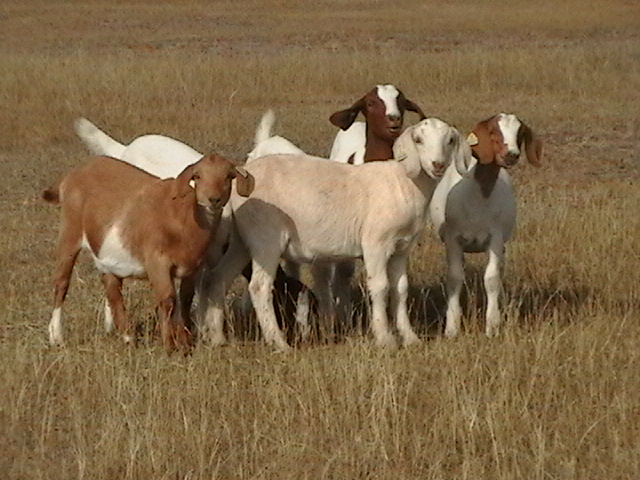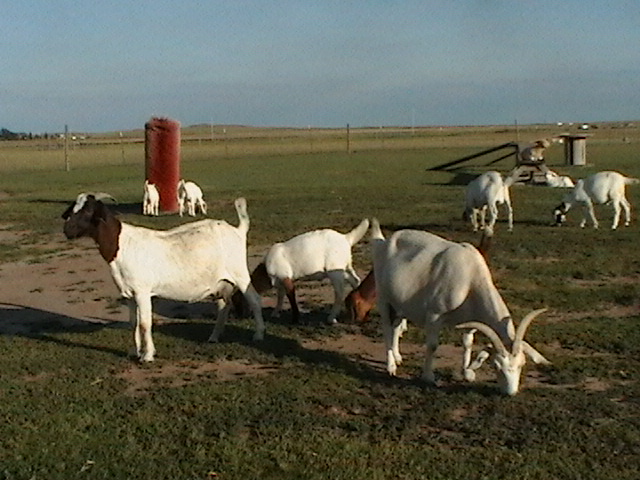GENEMASTERS ARE A MEAT BREED GOAT DEVELOPED FROM BREEDING THE SOUTH AFRICAN BOER AND THE NEW ZEALAND KIKO. THE RESULTS ARE A BREED OF GOAT THAT IS COMMERCIALLY VALUABLE WITH TRAITS OF THE FEREL GOAT. THAT MEANS MORE PARASITE TOLERANT, LESS HOOF PROBLEMS, AGGRESSIVE BREEDERS, EARLY MATURING AND FASTER GROWING KIDS. DOES PROVIDE ENOUGH MILK TO RAISE FASTER GROWING KIDS. ALSO, BUCKS CAN BE TRAINED FOR BACKPACKING HEAVIER LOADS THAN OTHER BREEDS.
If you are looking for a fast growing meat goat at a reasonable price we can help. We can sell a small starter herd with quality animals at a reasonable investment. Most kids can be weaned before 3 months old. We are looking at the average wether weight at 10-12 weeks old from 38-45 pounds. These goats are on pasture and milk from their mothers.
We had no idea what the results would be when we investigated breeding the boer breed to the kiko breed. It took time to research and a willing to risk our fullblood boer does to the Kiko from New Zealand.
Another avenue for the genemaster breed is training for backpacking. We have experimented with breeding the genemaster doe to our large alpine dairy buck. The results of this breeding show longer legs, muscular bodies and good temperment. We are still in the process of experimenting with this breeding. The kiko-boer traits are blended with the dairy breed and it seems this combination is promising. It appears to us they could carry heavier weights than the dairy breeds for backpacking. Not only that, less hoof trimming on the trail and less maintenance.
We were searching for a faster way to raise meat goats also. Breeding the boer to the dairy breed just didn't give us what we wanted. But breeding the kiko genetics into this breeding is far more promising.
By referring to the American Kiko Goat Association and reading about the development of the kiko we were on our way to a new venture. The kikos are early maturing animals and are more parasite resistant than most goat breeds.
The kikos are superior foragers and can survive on native lands and don't need much suppliment feeds. This has cut our feed bill more than half in the spring, summer and fall of the year. Our winters in Colorado are cold and the pastures are dormant. But even giving alfalfa during the winter months has certainly cut down on the feed costs.
Another advantage is hoof trimming. Like most goats hoof trimming can be a major time-consumer. I use to spend hours, days and even weeks trying to get to all the animals to trim hooves. Kiko offspring, whether full kiko or percentage kiko-boer, hoof trimming has nearly become a thing of the past.


